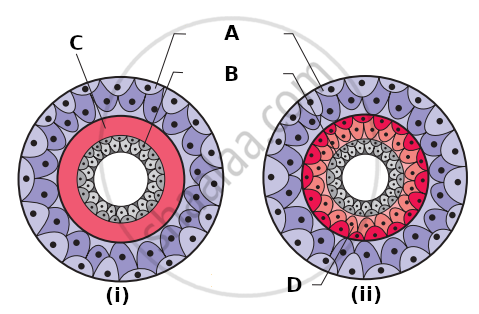Advertisements
Advertisements
Question
Write in brief about progressive changes in animal classification.
Solution
There are various scientists which have contributed to biological classification and based on their observations we have the current system of classification:
- Aristotle (384-322 BC): Also known as the father of classification, he classified animals on the basis of two points: presence or absence of blood, whether they live on land, air, or water.
- Carolus Linnaeus (1707-1778): Also known as the father of taxonomy, he classified living things into two kingdoms- Plantae and Animalia.
- Ernst Haeckel (1834-1919): He proposed the three kingdom classifications- Plantae, Animalia, and Protista.
- Robert Whittaker (1920-1980): He gave the five-kingdom classification- Monera, Protista, Fungi, Plantae, and Animalia.
- Carl Woese (1928-2012): He gave the classification where he classified all the organisms into three categories- Eukarya domain, Bacteria domain, and Archae domain.
RELATED QUESTIONS
Distinguish between intracellular and extracellular digestion.
What is the exact difference between grades of organization and symmetry? Explain with examples.
The largest division of the living world is ______.
Species is the ______ unit of classification.
Which of the following animals has a true coelom?
Observe the animal below and answer the following questions.

- Identify the animal.
- What type of symmetry does this animal exhibit?
- Is this animal Cephalized?
- How many germ layers does this animal have?
- How many openings does this animal’s digestive system have?
- Does this animal have neurons?
______ is a fluid-filled body cavity.
In which of the following the notochord is present only in embryonic stages?
Examine the figures of diploblastic (i) and triploblastic (ii) organization in animals given below and identify the labelled parts A to D.

In some animal groups, the body is found divided into compartments with serial repitition of at least some organs. This characteristic feature is called ______.
Identify the phylum in which adults exhibit radial symmetry and larva exhibit bilateral symmetry.
Provide appropriate technical term in the space provided.
Blood-filled cavity in arthropods ______.
Differentiate between open circulatory system and closed circulatory system
Sort out the animals on the basis of their symmetry (radial or bilateral) coelenterates, ctenophores, annelids, arthropods, and echinoderms.
What is the relationship between germinal layers and the formation of body cavity in case of coelomate, acoelomates and pseudocoelomates?
Complete the paragraph using proper words:
(Asymmetrical, Paramecium, Equal, imaginary, central, insects, rats, bird, three, unequal)
If body of any animal is cut through ______ axis of body, it may or may not produce two equal halves. Depending upon this property, there are different types of animal bodies. In the case of ______ body, there is no any such imaginary axis of the body through which we can get two equal halves. For example Amoeba, ______ some sponges. In radial symmetry type of body, if imaginary cut passes through central axis but any plane of body, it gives two ______ halves. For example Starfish. In case of this animal, there are five different planes passing through ______ axis of body through which we can get two equal halves. In Bilateral symmetry type of body, there is only one such imaginary axis of body through which we can get two equal halves. For example: ______ fishes, frog, birds, human, etc.
Animal with bilateral symmetry in ______.
